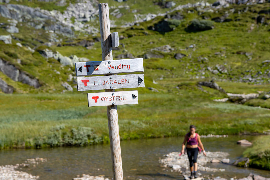For someone who spent their childhood surrounded by natural beauty and later migrated to a city as lush as Seattle, the idea of transforming the humble planting strip—the patch of ground between the sidewalk and the street—into a thriving green space is irresistible. Here at Happy Garden Projects, we see these often-overlooked ribbons of land as blank canvases primed for ecological artistry.
Seattle residents have discovered that cultivating these strips enhances curb appeal, attracts pollinators, and even offers more room for those who like getting their hands dirty with edibles and herbs. Importantly, before you begin dreaming of bee balm and Oregon holly-grape, the city requires gardeners to get a free Street Use permit. The effort is well worth it, especially when your patch produces color, fragrance, and a natural buffer from the urban hum.
Before any digging, it’s critical to confirm the absence of underground utilities—simply call 811 to have a map drawn up for free. Once you’ve secured the all-clear, let your imagination (and responsible planning) roam: perennials, native grasses, low shrubs, and edible plantings are all encouraged, provided they don’t obstruct walkways or drivers’ sightlines.
Seattle specifically champions native and drought-tolerant plants. Some favorites include wild ginger and shore juniper as groundcovers, or Pacific coast iris and lady fern for seasonal highlights. If you have space for shrubs, look into snowberry and dwarf olive, which are as functional as they are beautiful. A well-chosen palette will not only support wildlife but make maintenance easier year-round.
Permits and Planning: The Essentials
The process to get your garden growing starts with a solid site plan. Your drawing must detail plant placements and confirm that your design keeps sightlines clear and walkways accessible. Templates are available to make drafting a breeze, even if you’re more of a green thumb than a draftsman.
Submitting your application is straightforward through the Seattle Services Portal. Just select the "Gardening/Planting" permit type after logging in. If this sounds intimidating, support is available from real humans—either virtually or over the phone—to guide gardeners through each step.
Here’s a quick reference table to help keep things organized:
| Task | Action |
|---|---|
| Check for Utilities | Call 811 before digging |
| Choose Plants | Prioritize native/drought-tolerant varieties |
| Draw and Upload Plan | Use the site plan templates and upload to portal |
| Apply for Permit | Use Seattle Services Portal (it's free!) |
Community, Beauty, and Ecology
It’s heartening to see so many neighbors embracing the right-of-way planting opportunity. Beyond personal satisfaction, these collective efforts buffer stormwater runoff, enhance safety for pedestrians, and foster biodiversity across the city streetscape.
If you’re looking for more of a collaborative experience, Seattle’s P-Patch community gardens or neighborhood volunteer days are excellent next steps. With every new planting strip garden, we edge a little closer to the vision of Seattle as a city where nature flourishes in harmony with urban life.
References:
[1] Seattle Department of Transportation, "Gardening in the Planting Strip," seattle.gov
Read More

Ingrid Felton
Author
Born in a small coastal town in Maine, Ingrid Felton spent her formative years exploring tide pools and sketching sea birds. She earned a degree in marine biology before transitioning to work as a scientific illustrator, blending her love for the ocean with her artistic skills.
In her thirties, Ingrid moved to Seattle, where she balances freelance contracts with volunteering at local environmental organizations. She is known among peers for her detailed watercolors and her advocacy for sustainable marine practices.


